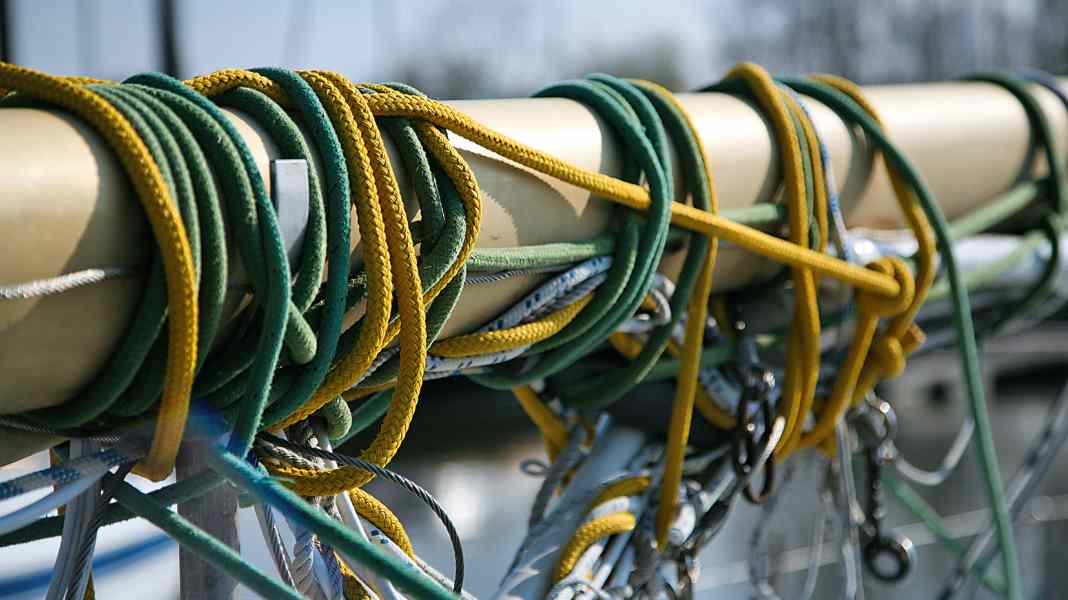
All topics of this season start special:
Rigging faults can be life-threatening - and expensive. So check, check, check - down to the smallest detail if possible. Damage to the mast profile and standing rigging, including the loss of all sails and significant damage to the deck, fittings and electronics, can quickly cost between 30,000 and 100,000 euros for a standard 42-foot yacht. For older boats, this can mean a total economic loss.
Even the smallest deficiencies in the rigging, such as a pin in the fork terminal that is too small, worn shroud mountings or a bent or missing split pin, can result in a mast breakage. According to Pantaenius, this insurance broker has handled around 500 claims in this context in the last three years alone.
Rig check: precaution is important
"We recommend checking the rig, main boom and spinnaker pole before storage, i.e. in autumn, and cleaning them with water and a little detergent to remove dirt and salt. Then rinse with clear water," says Ole Büssen, master metalworker and rigging professional at full-service provider Ancker Yachting in Kappeln.
The remaining salt could otherwise attract moisture from the air in winter and cause corrosion. When cleaning, you should take a closer look at the profiles and connections. This early inspection also has the advantage that there is enough time over the winter to procure spare parts. Corrosion, including holes in the anodising, can also occur at the contact points between the shrouds and the profile if the shrouds are stored on the mast - which is why the rigging professional advises against this.
If there are dents, cracks or severe corrosion, be sure to ask a specialist. If the anodised coating on the rig is partially abraded, these areas can be sealed with aluminium spray; Ancker Yachting uses Galvanal from W&S. In the case of painted masts, damage such as scratches or scuff marks should be sealed with a thin varnish, otherwise the existing varnish will be further infiltrated by moisture.
Clean shroud tensioner
To remove old grease from the shroud tensioners, brush the threads with paraffin, leave overnight, then clean with a brush. This measure is not just for cleaning. Damage to the threads can only be detected by unscrewing them. Before re-greasing, treat with brake cleaner, which removes the lubricating film of petroleum so that the grease sticks. For lubrication, use grease that is resistant to pressure and seawater, such as Seldén shroud tensioner oil.
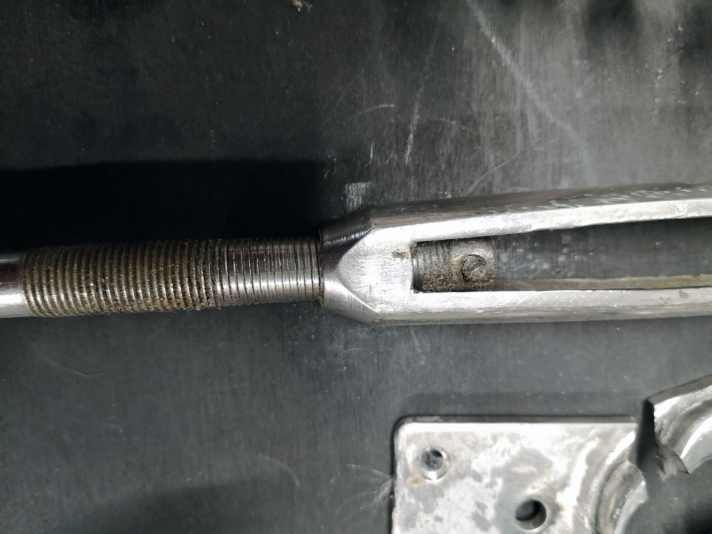
Always check the securing pins, bolts and terminals for breakage and corrosion. The securing cotter pins of the shroud tensioners should only be long enough so that they do not protrude too far beyond the tensioner in order to avoid injury or damage to the sails. Only bend the ends up to an angle of around 15 to 20 degrees. They will hold securely and can still be pulled easily. Tap the tensioners in the area of the cotter pins after rigging.
A newer variant are so-called Smartpins from Blue Wave, a combination of split pin and Velcro tape that is wrapped around the tensioner and prevents the split pin from falling out. Shrouds and stages must be checked for damage such as broken card wires and kinks; damaged wires should then be replaced in pairs due to the otherwise different stretching properties. In general, the standing rigging should be replaced after 15 years or 20,000 nautical miles at the latest; some insurers even require shorter intervals in their policies.
Check rolling system
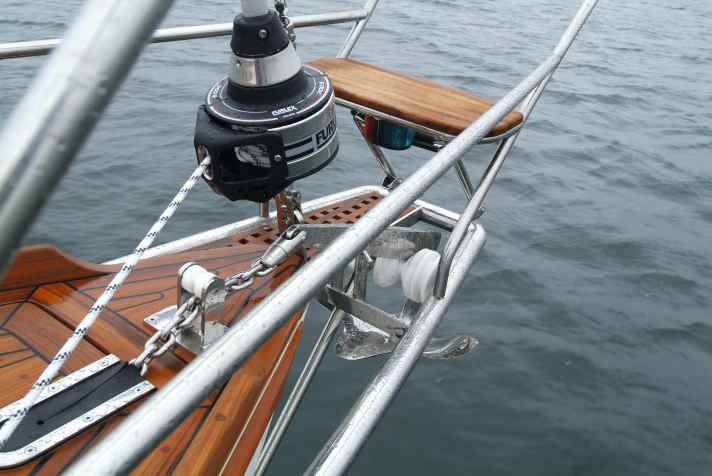
In the case of rolling systems, check the wire as far as is visible, especially in the upper area. If a halyard is accidentally wound up, it can untwist there.
"Be sure to check the drum and halyard swivel for ease of movement and abnormalities, clean and lubricate them - this is done far too little," recommends Büssen. The grease recommended by the manufacturer is suitable for lubrication; a good alternative is boat grease from Liqui Moly.
Roller masts
Furling masts are becoming more and more popular on cruising yachts. It is very important to have a specialist look at them every five years or according to the interval in the operating instructions, because if they suddenly stop furling, it is almost impossible to recover the sails. If there is a crank backstay tensioner, this also requires maintenance at least every five years, including opening, cleaning and lubricating the drive.
Traps, pulleys, diverters
Pull the halyards out of the mast to check them, don't forget the safety lines or pull them out halfway and check for damage, especially halyards with wire leaders. Also check them to see if they have been sawn in anywhere, especially on halyard guide eyes and halyard pulleys.
Check all fittings for tightness, especially the retaining plates of the shrouds, as these are safety-relevant. If anything wobbles, rivet or screw it on again. Lug fittings tend to loosen or knock out at the cross bolt.
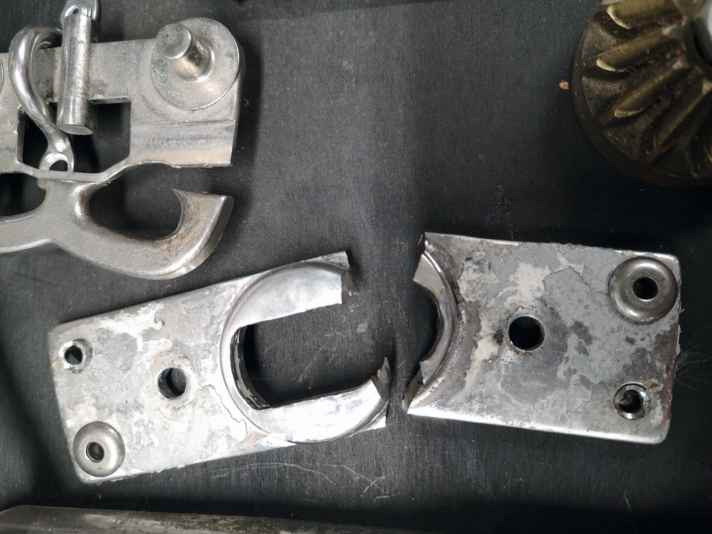
Check all rollers for free movement and wear. Loosen bolted fittings on removable parts such as the end pieces on the boom, which can be removed for maintenance, at regular intervals and grease or apply release agent to the bolts so that they remain smooth and do not corrode.
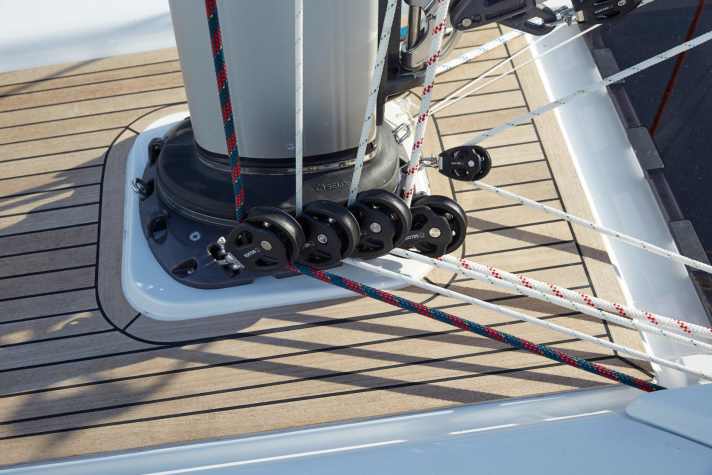
According to Büssen, in addition to cleaning, an inspection also includes sealing the profiles. He uses his own Ancker Yachting mast milk, a special silicone-based cleaner. The aluminium is rubbed thinly with a sponge and wiped off with a clean cloth after a short exposure time. This also gives the mast a certain lustre.
Check the puttress fittings for corrosion or hairline cracks in the deck area, but as a layman you often can't see much. The most dangerous fittings are welded steel fittings, which should be checked by a specialist.
Büssen is particularly pleased when no parts such as bolts, toggles, entire spreaders or tensioners are missing when setting the mast. "This happens very often and holds up the whole process, right up to postponing the start of the season."
That's why he advises storing everything you dismantle together in one place. For example, in a plastic container in the pantry sink. Screws, cotter pins or bolts can be stored in extra plastic bags so that you don't have to rummage around for ages later.
Rig checklist
- Grease rolling systems
- Check all fittings
- Clean and grease shroud and backstay tensioners
- Check standing and moving goods
- Check spinnaker/gnaker pole
- Checking the jetting iron
- Mast number ready to hand on board
Download free of charge: Checklist start of season PDF

